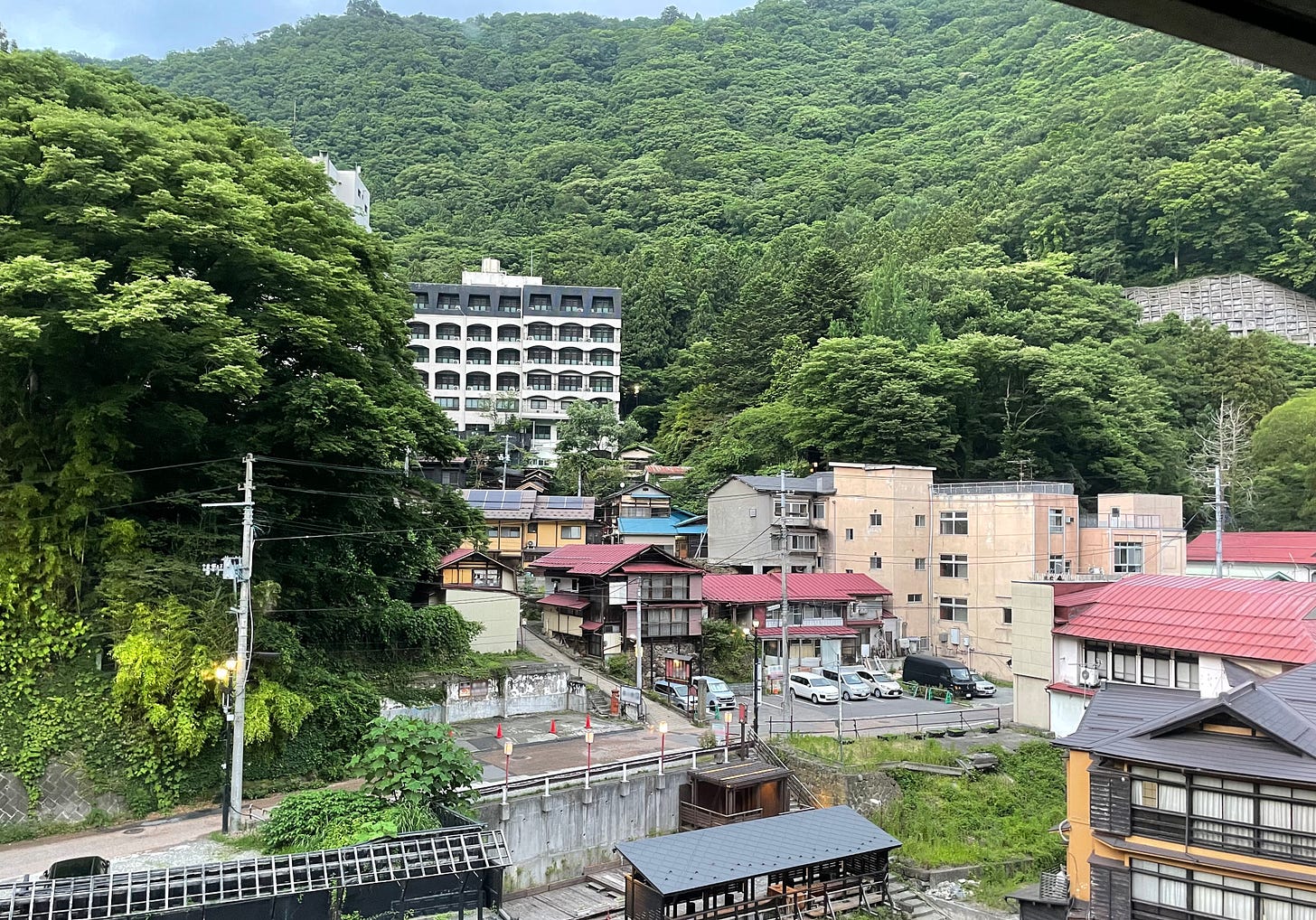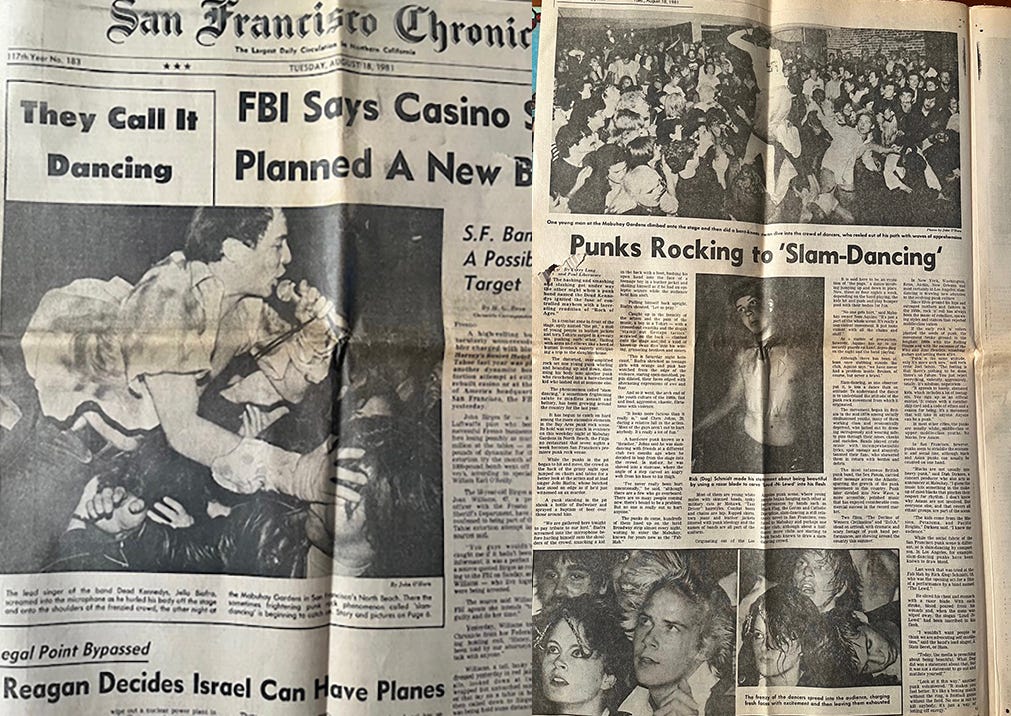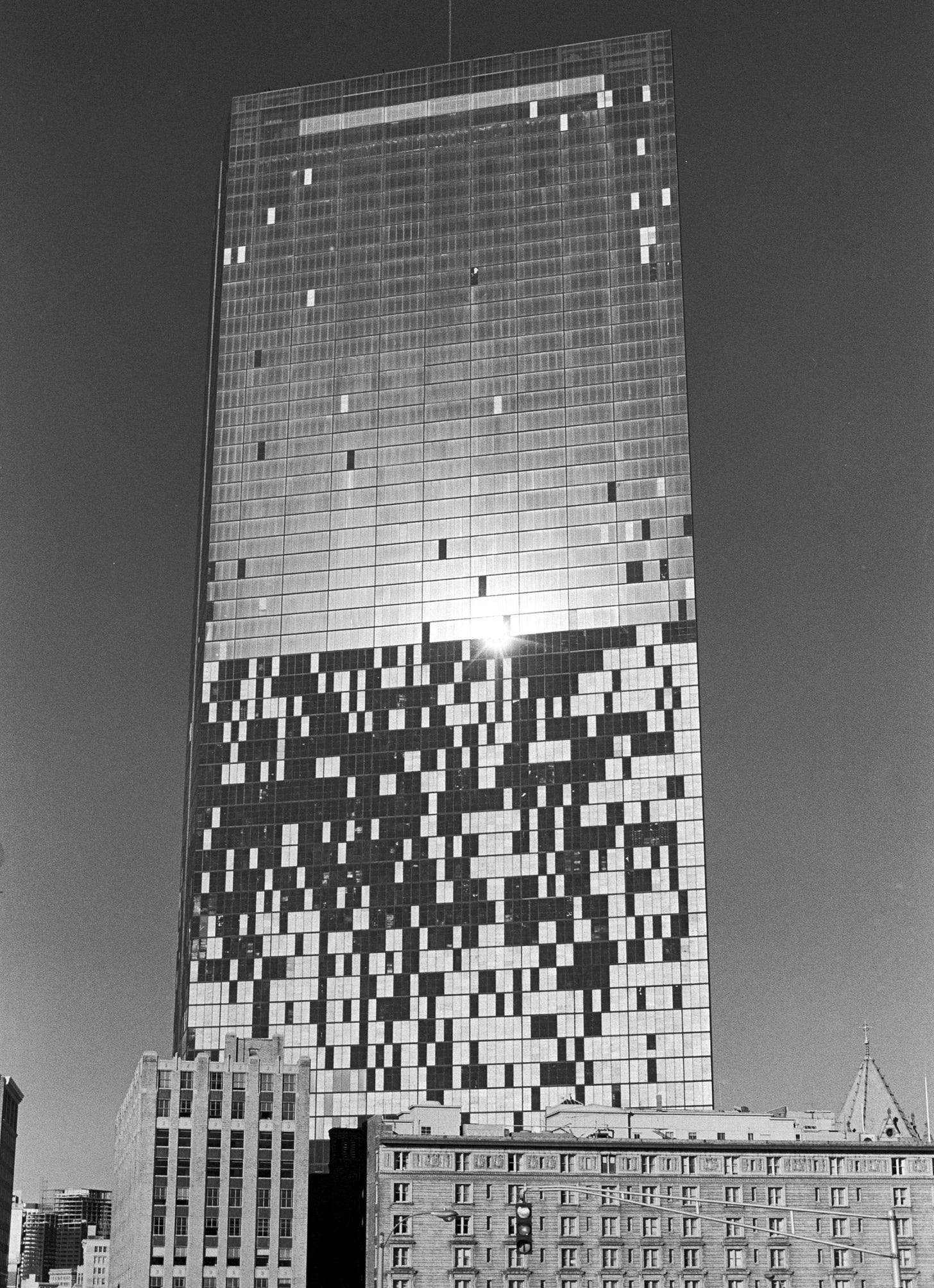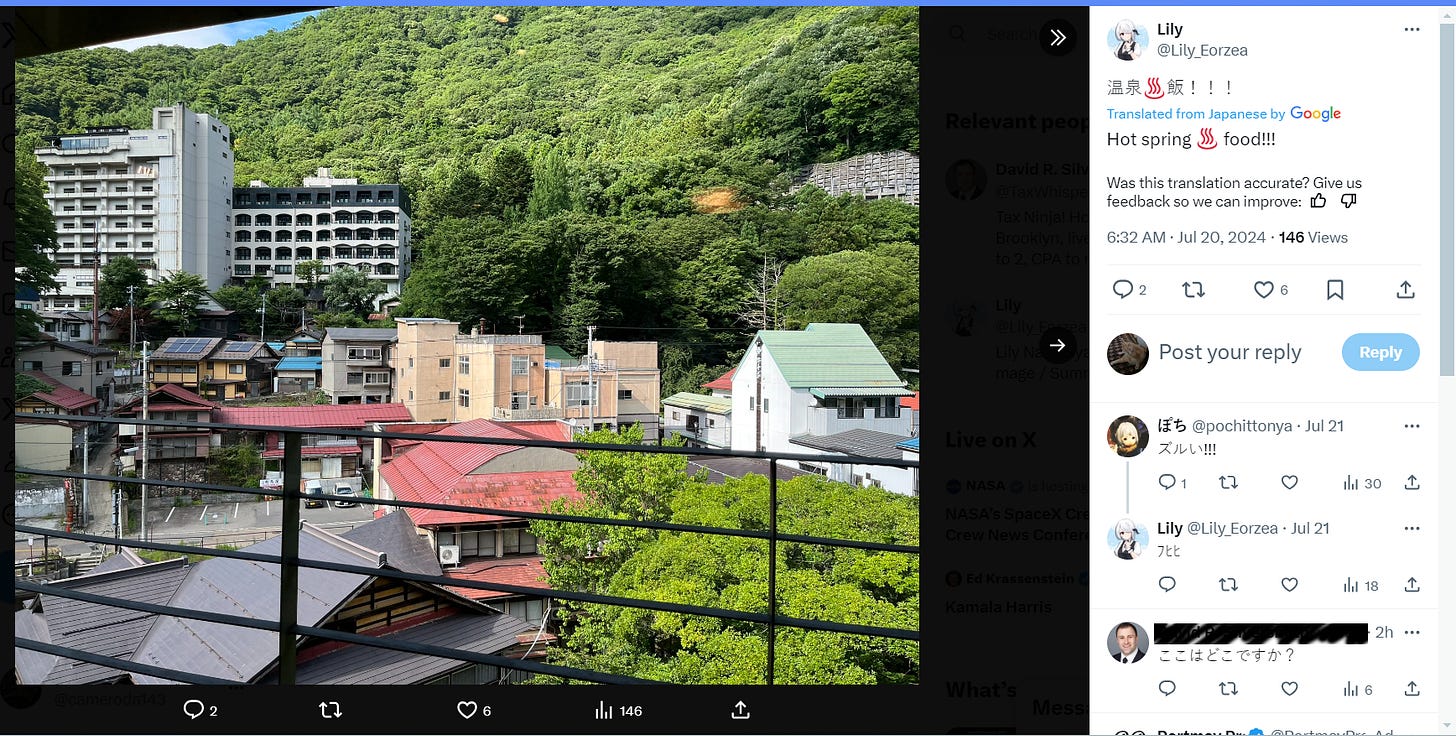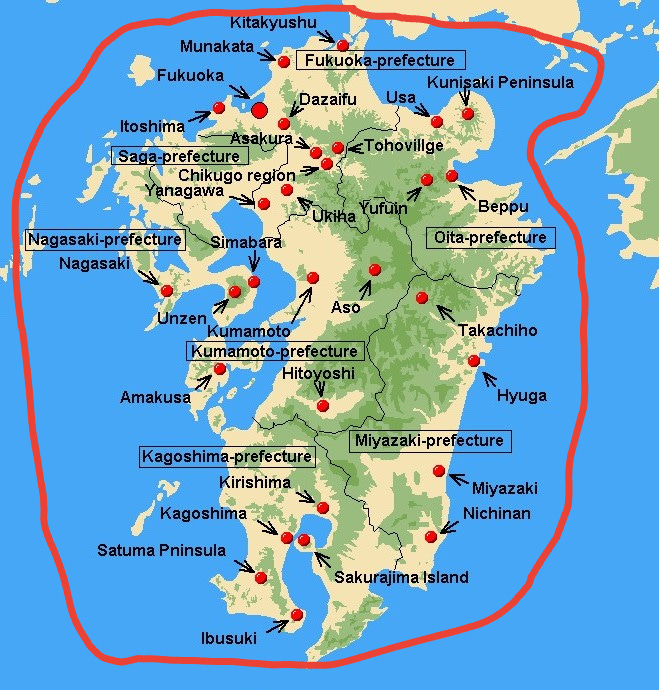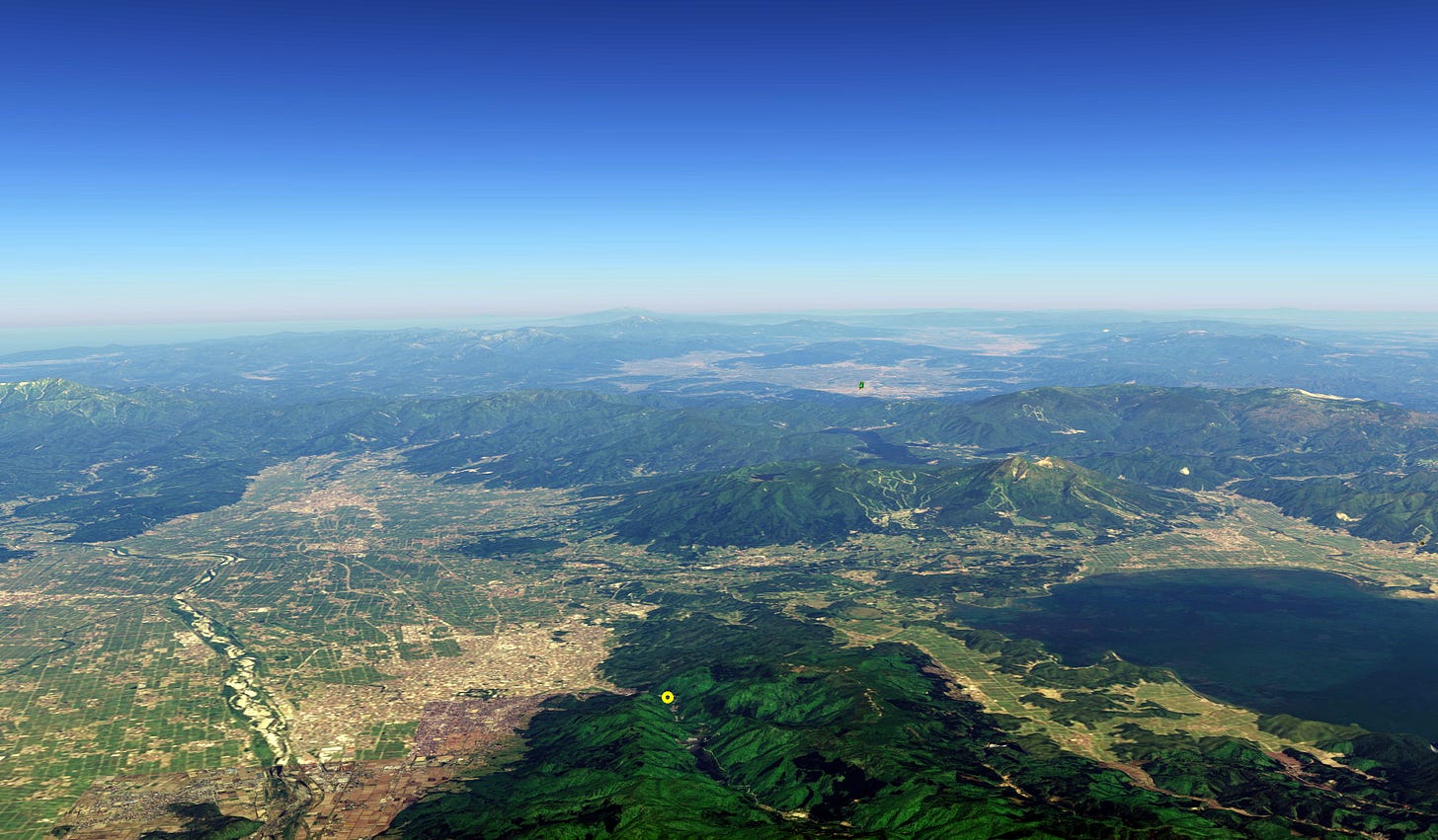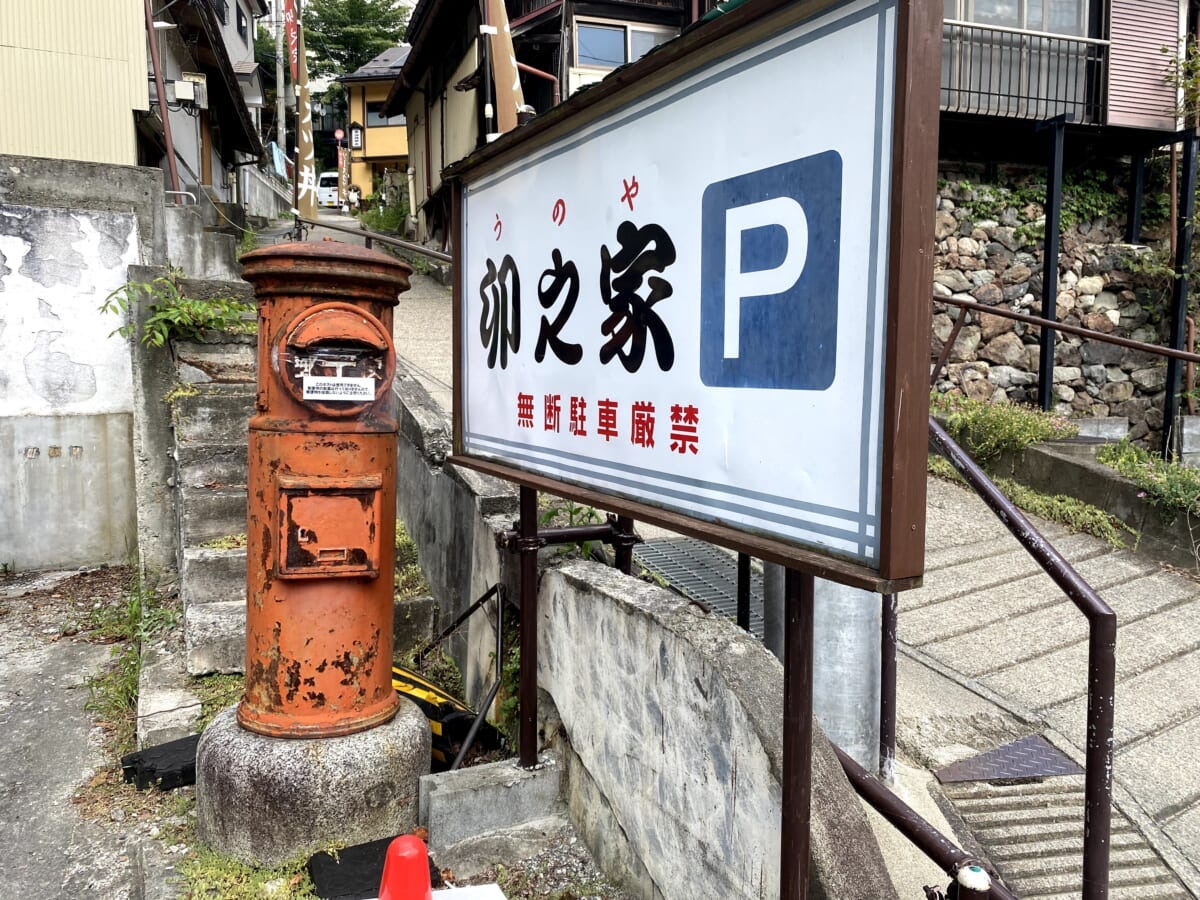VFYW: Soak It In
For contest #429, we escape to a serene retreat — surrounded by natural disasters, poisonous fish, and moon bears.
(For the View From Your Window contest, the results below exceed the content limit for Substack’s email service, so to ensure that you see the full results, click the headline above.)
From the winner of last week’s contest — the newly anointed super-sleuth in Nashua:
Wahoo! It’s the greatest day, and greatest honor of my life. I’d like to thank the Dish academy and all those who’ve supported my journey from nothingness to super-sleuth-iness. My wish is that you each could see what I now see from these gleaming, marbled sleuthing heights. I see glorious views from modestly-priced hotels across the globe. I see photographs yet to be taken, blurred and beagled. They’re real and they’re spectacular.
For my prize, I’ll take the book. I’m super excited for it. Thanks Chris!
This sleuth got scooped:
Recently I was so excited to go to Boston and hopefully take a VFYW photo that you could use for the contest. So, of course, imagine my dismay when last week’s pic was in Boston! Oh well, maybe I can get a pic from some of my upcoming travels.
Yes please. Our previous winner “way out west” has props for the super-sleuth in Indy:
I hugely enjoyed her comments on the Boston band, the Pixies. Their songs, along with those from Frank Black’s later solo career and Kim Deal’s The Breeders, rank high on my playlist of favorite tunes. Great to find someone else who has a similar taste in music to me (trust me, it’s rare).
I first experienced this genre of music (Alternative/Punk/New Wave) in the fall of 1979, when a friend of mine took me to see a Dead Kennedys show in San Francisco. I was a couple of years out of college and pretty much listened either to what is now called “classic rock” or to the Grateful Dead, since there really wasn’t much else on the FM airwaves in the Bay Area at the time. There was a nascent underground music scene, but I was completely unfamiliar with it. That was to change.
The Dead Kennedys headlined that night at a small club called the Mabuhay Gardens, with a stage only a couple of feet off the floor, so you were essentially face-to-face with the band. The floor in front was jammed with people, all moving as the lead singer, Jello Biafra, ripped into the first song of their set. The show was wild and I was hooked! That was 45 years ago and I’m now 69 — very much an old fart, but I still love the music.
I’ve just returned home from a visit to San Luis Obispo (the location of contest #422), and I found the following 1981 copy of the San Francisco Chronicle that I had saved, with Jello Biafra on the front page and a long writeup on page 6. I thought you might enjoy seeing it:
I don’t recall if I was at this show or not. I’ve looked at the crowd and I don’t see myself. But if not this show, I was at many like it. As the article mentioned, slam dancing was a progression from pogoing — a logical progression, in my opinion. You’re still moving up and down, but now you are also moving sideways, as if you were in a pinball machine (but being packed together, you actually don’t move very far). In '81, this style was great fun, and had not yet progressed to the mosh pit version of slam dancing (think teenage boys wearing boots), at least at the Bay Area clubs I was attending.
My favorite song from the Dead Kennedys has to be “California Über Alles.” Here’s a link to a video collage of them playing the song at various venues, but it doesn’t quite do the early shows justice. Here’s the official music video:
When I saw the Dead Kennedys in 1979, our governor at the time, Jerry Brown, was running for president. “California Über Alles” plays off this campaign, satirizing Jerry Brown’s “Governor Moonbeam” image. Coincidentally, Biafra was running for mayor of San Francisco at the same time, and he would finish third with 6,591 votes, which proved to me that 6,591 San Franciscans had a sense of humor like mine.
Another campaign-related song is highlighted by the “regular super-sleuth in NYC”:
In this election season, our musical sleuth in Indy missed a classic Boston tune: “Charlie on the MTA.” Kamala Harris may have “Freedom” by Beyoncé, but in 1947, the Kingston Trio sang the original version of “Charlie on the MTA” to benefit the Boston mayoral campaign of Walter A. O'Brien, the Progressive Party candidate:
The song didn’t help: O'Brien got 1.2% of the vote.
A decade later, the Kingston Trio had a minor national hit with a different version of “Charlie on the MTA,” after changing the candidate’s name so they wouldn’t be associated with a Progressive candidate:
For another followup on Boston, the super-sleuth in Providence has a “clarification to the sleuth who addressed the plywood-covered Hancock tower (which I remember well from childhood)”:
I.M. Pei’s office did NOT (nor did their insurance) pay for the failed glass in the tower. They couldn’t possibly have; it would have wiped them out. The glass failure was actually the LEAST worrisome of at least three major potential failures that the envelope-pushing (and truly gorgeous) could have had. Here’s a good quick précis. As William LeMessurier later did with an equally frightening possible collapse at Manhattan’s Citicorp tower, credit goes to that genius structural engineer and his team for identifying the problems with the building and working out solutions (expensive but necessary ones).
In the case of the glass, the outer sheet of reflective double-glazed units was what was falling off, because the reflective coating didn’t bond sufficiently well to the spacer bar between the layers (in simplified terms). So, in the end, the company that paid for the glass replacement (with inch-thick SINGLE glazing) was glass manufacturer Libbey-Owens-Ford, which was also the only corporate entity big enough to pay for such a huge failure. It’s arguable that Pei designer Harry Cobb’s insistence on minimal framing — and the most open sight-lines possible — may have increased the danger of those outer panes falling, but that framing was key to the extraordinary purity and beauty of the building.
My recollection is that, in the plywood days, Hancock employed an army of watchers on all sides of the building, since a slight color-shift in a panel’s reflections foretold failure, so they’d race to pull that one out before anything worse happened. Most interestingly out of the LeMessurier revelations, though, was that the building was well-considered in terms of structural failure in the obvious way — wind pressure on its broad sides against a relatively thin depth — BUT, what his team turned up was that the Hancock, under a rare wind-shear condition, could have folded up/over like a pair of scissor blades sliding past each other the LONG way … eesh!
On to this week’s view, one sleuth merely guesses, “St. Thomas, VI.” Another gets closer with “Hong Kong.” Here’s the beginning of the entry for the super-sleuth in Bethlum:
I encountered a possible fellow sleuth who replied to an X user’s post with almost the same view as this week’s, asking where her picture was taken:
I almost commented on his comment, but thought better of it. Lily doesn’t need my clutter on her feed. But her food pic on the same post did help cement my location, since the dishes matched some pics on a Travelocity post from the hotel.
From the super-sleuth in Brookline:
The VFYW contest seems to be drawing me back into the sleuthing fold. On the heels of last week’s photo from down the road in Boston, I knew at a glance that this week’s view is from another place in the world I call home.
One thing that caught my eye: the VFYW shows a poster of what looks like a tasty dish. My stomach was grumbling to find out what this is, so I made sure to investigate — and I was not disappointed. It’s the parking sign for a nearby restaurant featuring its “famous” katsudon (pork cutlet on rice):
The super-chef made katsudon for his weekly meal, seen below. But first, a previous winner scrutinizes more clues:
The architecture seems Japanese/Chinese. I’m wild-guessing that the large bush with the palmate leaves is a Hibiscus mutabilis (Confederate rose, or cotton rose mallow), which is native to China/Taiwan but widespread elsewhere. The retaining wall at top-right is an example of sprayed frame construction, a method commonly used in Japan. (Reddit recommends googling 吹付法枠工 to get lots of diagrams and pretty pictures.) The one piece of text in the view not completely blurred out is the stone marker by the street intersection:
Street View later gives us a better view of two sides of the marker:
The super-sleuth in San Mateo settles on the right country:
Japan is one of my favorite countries to visit, and my wife and I have been there quite a few times — in Tokyo, Kyoto, Nara, Osaka, Kamakura, Nikko, Atami, and Hakone. This week, the majority of the VFYW image is dense green foliage. So for this week’s VFYW Reimagined, I created a monochromatic revision from green into black, with some subtle image adjustments. The resulting Reimagined looks, to me, even more Japanese than the original:
A previous winner hints at the right location:
The structures in the lower-left look a little like some kind of transit station. If so, it’s surely abandoned, since the tracks would dead-end in a hillside. If not a transit line, what else might run in the low area at the bottom of the view? Is there room for a creek or river? Perhaps a hot spring?
A series of serendipitous steps took me to a view very close to ours:
More clues from the Berkeley super-champ:
It’s Japan, of course. That much was obvious. But what in the scene distinguished it from every other verdant valley in the country? This place wasn’t easy to find.
As far as I can tell, there are only two significant clues in the photo. The first is at the bottom of the image: the open-wooden structure with the slatted bench. It’s a public foot bath known as an ashiyu (足湯 — combining the characters for “foot” and “water”). Such amenities apparently tend to be located at or near hot springs, called onsen (温泉 — combining the characters for “warm” and “water spring”).
So this is a hot springs resort! Great! But Japan is positively littered with hot springs. It has 10% of the world’s active volcanoes, so thousands of onsen are scattered all over the country.
And that’s where the other clue comes in: every sloping roof in sight is equipped with snow guards. That suggested that a search concentrating on onsen in just the snowiest parts of Japan could be fruitful — and maps of snowfall in Japan are available to help with that.
From a newcomer to the contest:
I’m 99% certain this is in Japan. If the tiny cars parked into the side of the mountain aren’t a giveaway, then it’s either the triangular wooden roofs that probably date back to the Meiji Era, or the concrete encapsulations built into the side of the mountain to help prevent landslides in case of earthquakes:
Are we in Yugawara, Japan?
Nope. From a previous winner in Springfield, NJ:
This photo reminds me of traveling (on business) outside of Tokyo in the early 90s, seeing the disorganized jumble of homes and industrial areas. I found it hard to figure out a search strategy. The architecture and topology seem correct for Japan. So I’ll guess some unknown town on the western side (within an 80 mile radius) of Tokyo.
Nope. The ski nerd points to a difficulty with the search:
As of June 2019, when that Google Street View was captured, the building was closed:
But the building still has a mural of 19th-century warrior:
More on that warrior to come. From a sleuth in Australia:
I am 99% confident that this is Japan — from the post box, the cars, the buildings and general vibe. On the cars, I learned those are microvans, and that they are called miàn bāo chē in China, which translates to “bread-loaf vehicle,” because of their shape.
Anyway, I cannot see any way to get the actual window — short of hours of grinding, looking at major urban centres right next to big forested hills, or slope stabilisation works — which are probably very common on Japan. So I am going to guess: Kobe.
My reasoning: a lot of newish-looking buildings, with roofing in sheet metal rather than tiles (which seem to be very common in Japan). Kobe had a earthquake with widespread building damage, and no doubt many roofs were replaced, maybe with more durable steel ones? Also, in the 10 minutes I spent on Google Maps, there were plenty of red steel roofs in Kobe, and the north side of the city looks nice and lush and mountainous and green, and I found an example of that very weird looking cube-curtain slope stabilisation.
I dips me lid to whoever finds it this week!
The super-sleuth in Bend didn’t:
At first I thought it was jungle Asia, but the cars seem more like fancy Asia, and the license-plate aspect ratio is more consistent with Japan. I’ll go with lusher southern Japan, somewhere on the island of Kyushu, which I circled here:
I visited Kyushu decades ago. I saw almost no other westerners there and got lots of double-takes while walking around. People didn’t expect to see a Western-looking person there, but they were very friendly, and I consider Japan to be a great and wonderful country.
Another sleuth, another city:
While on tour in Japan with Smokey Joe’s Cafe in 1998, a few of us went on a side trip to a traditional Japanese Inn in Hakone. Only one person working at the hotel spoke English. Great memories!
The super-sleuth in Eagle Rock was better than the machines this week:
Google really, really wanted me to think this view was in Yamanashi, Japan. Get yer head outta yer ass, Google!
Here’s the human machine, Chini, circling the right spot:
He adds:
Our last-chance clue this week points the way, in numerical fashion, from a recent, tragic landmark:
90,131,133,134,137! ----> 59.01
More on that tragedy below. From the super-sleuth in Tucson:
Right away this picture had an Asian feel. The roof pitches, the vegetation, the hills. It very much reminded me of the earlier photo of Shirakawa-go, in contest #377. I zoomed in on an interesting part in the center of the photo and noticed a couple of blurred-out signs — one with apparent vertical lettering (clue!), an obelisk, and what looked like a fire hydrant:
However, the red thing is not a fire hydrant; it’s an old mailbox:
The super-sleuth in San Fran names the right prefecture and city:
Well, we are in the mountains of Japan this week. That’s the easy part.
Keep reading with a 7-day free trial
Subscribe to The Weekly Dish to keep reading this post and get 7 days of free access to the full post archives.


